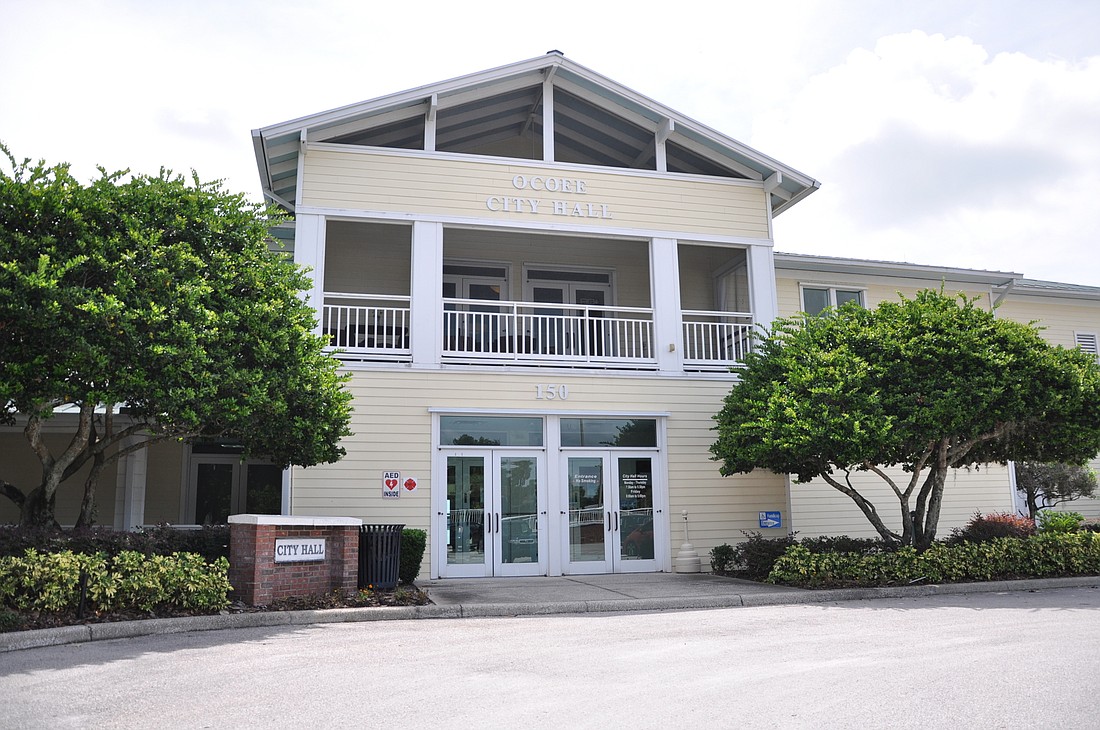- January 23, 2025
-
-
Loading

Loading

After much deliberation, Ocoee city commissioners rejected a proposal for a CEMEX concrete batch plant on Ocoee Apopka Road.
The City Commission voted Tuesday, July 20, to deny the applicant’s large-scale preliminary site plan with waivers based on a number of reasons.
The property in question is an 11.23-acre parcel located at 450 Ocoee Apopka Road, which currently is undeveloped. The proposed plan consisted of a 1,750-square-foot office building; a 7,320-square-foot shop building; two 65-foot-high, partially enclosed silo mixers; open storage of materials; and associated improvements to distribute cement, ready-mix concrete and aggregates.
Although it has a zoning of I-1 (Light Industrial) and a future land-use designation of Light Industrial, the property has additional special elements that complicated matters. It’s located in both the Business Character Overlay Area and in the Brownfield Overlay/Ocoee Special Economic Enhancement District.
The Business Character Overlay Area’s vision plan identifies uses appropriate for higher densities with a mixed-use development, and heavy industrial is not permitted. The request for a preliminary large-scale site plan for CEMEX was a waiver to the entire overlay zoning. The Brownfield Overlay also is intended to foster higher-intensity uses and redevelopment than what CEMEX proposed.
Development Services Director Michael Rumer said the main waivers requested were to increase maximum height allowed from 35 to 65 feet, allow outdoor storage and allow for outdoor manufacturing.
However, staff recommended the City Commission deny the proposal at hand, one of the reasons being the lower-density use. That means significantly less money accumulated in road-impact fees — because they are based on the size of buildings — and water service for the city.
Furthermore, Rumer said he was concerned about the waiver to allow outdoor storage as it is not permitted in the overlay or in Light Industrial uses. He also worried that should manufacturing be permitted outdoors, the city might have a tough time working with applicants in the future on the overlay’s vision plan.
“Who’s going to want to be located next to it?” Rumer said. “It kind of takes some things out of play on the north and west side from what we’ve envisioned. Obviously, CEMEX is a large, great company, and we’d love to have their corporate headquarters or some sort of element here — just not the outside storage.
“The team here that’s assembled, great people,” he said. “They do projects in Ocoee, they’ve done great stuff, (I) don’t like to be pitted against them at all. … They know we’ve worked on this. We’ve worked on items and agreed to items and tried to make in some cases the best project we can present to you, but it still misses the mark with the land use, the overlay, the zoning.”
Applicant Julie Kendig-Schrader, an environmental attorney, said her team has taken steps to amend its application throughout the process and believes the project complies with criteria.
“The manufacturing and the creation of the ready-mix (concrete) will not take place outdoors,” Kendig-Schrader said. “We believe we presented a plan that doesn’t have manufacturing occurring outdoors. One change that we’ve made between (Planning & Zoning) and today — or that we would put on the table to make — we propose to actually enlarge the office to 5,000 square feet, and that’s proposed to be a two-story permanent structure also designed to match the Florida vernacular.”
Commissioner Larry Brinson was concerned about the possibility of concrete dust associated with the site and how it could affect local waterways and residents’ quality of life. He also questioned whether it could be considered hazardous material.
“I’ve never seen a plant or a site that didn’t have dust,” Brinson said. “And so when I start looking at the surrounding area and there’s a white film or gray film over everything, in my mind, I’m associating it with that site. And so with Lake Apopka, Lake Apopka is one of those lakes that the state is working hard trying to recapture the life back in that lake. So what do you do with your runoff? Is that going back into the lake? … I’m not sure all your byproducts are staying on the site. … I want to make sure because our aquifer is where we get our water from.”
Steve Blanton, of CEMEX, said concrete is not hazardous and is used in construction in and around waterways all the time.
“The product we’re talking about, we’re all standing on today,” Blanton said. “I know (people) think of us as some huge pollutant, but it’s the concrete block we’re sitting in, it’s the concrete we’re sitting on. … If you go to a boat ramp, boat ramps are made of concrete. Concrete is there. The aqueducts in Rome are made of concrete. It’s not some hazardous material that’s going to poison us all. I appreciate the concern but I think as far as the hazard, there’s not a lot. … Our facilities are contained, and there’s no one better in the business than we are.”
City leaders denied the request 3-2, with commissioners Brinson and George Oliver voting in favor of it.